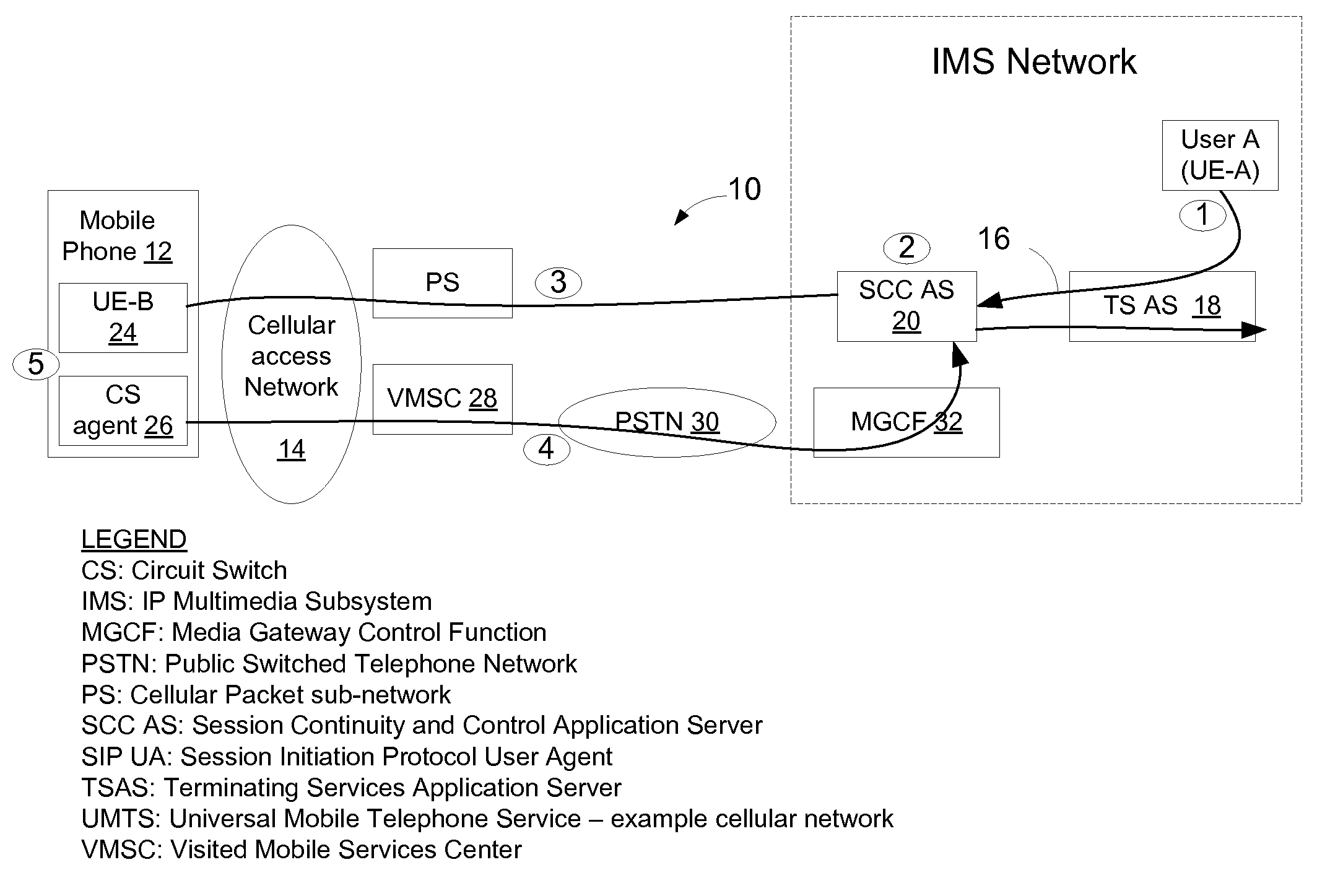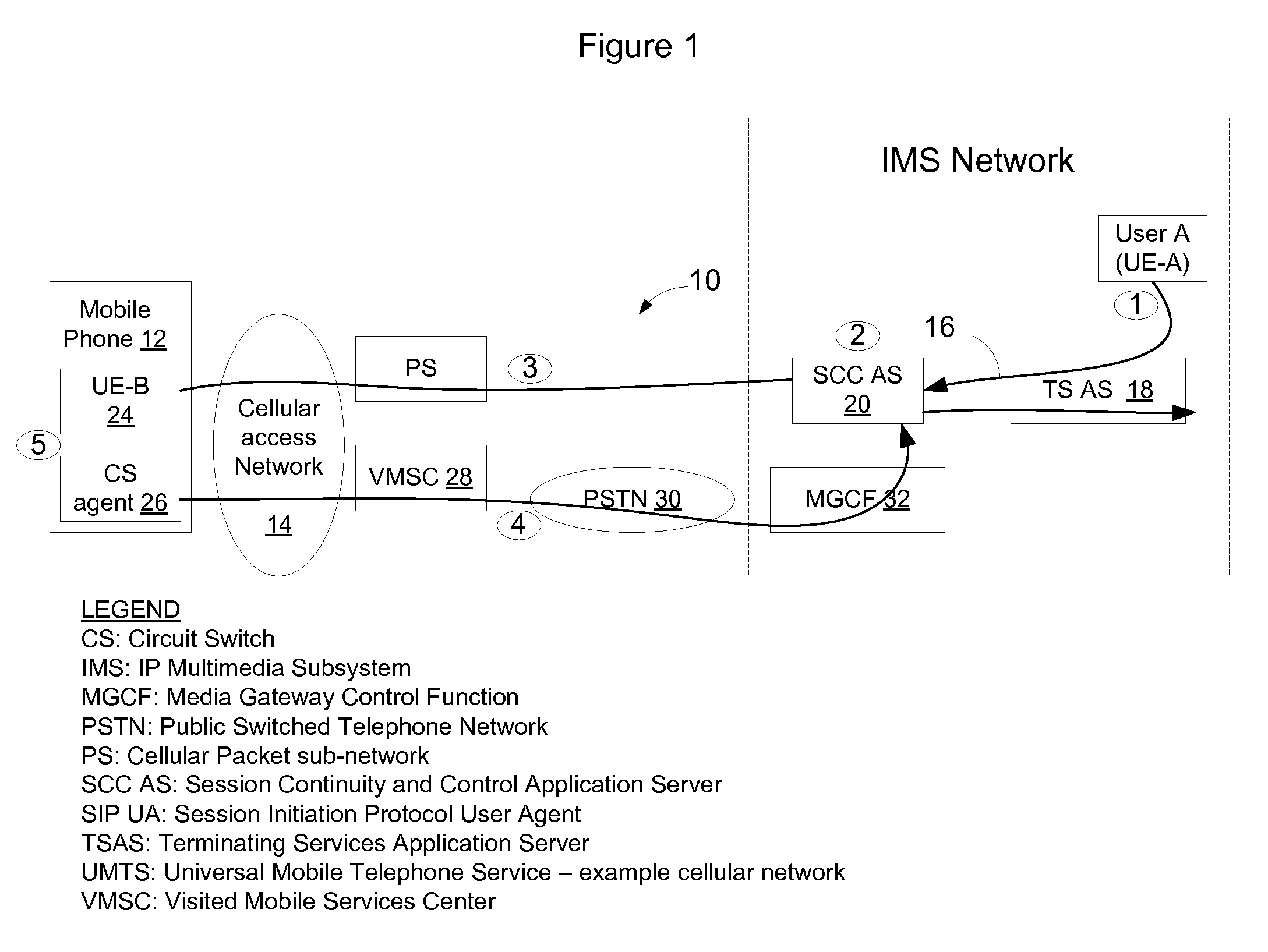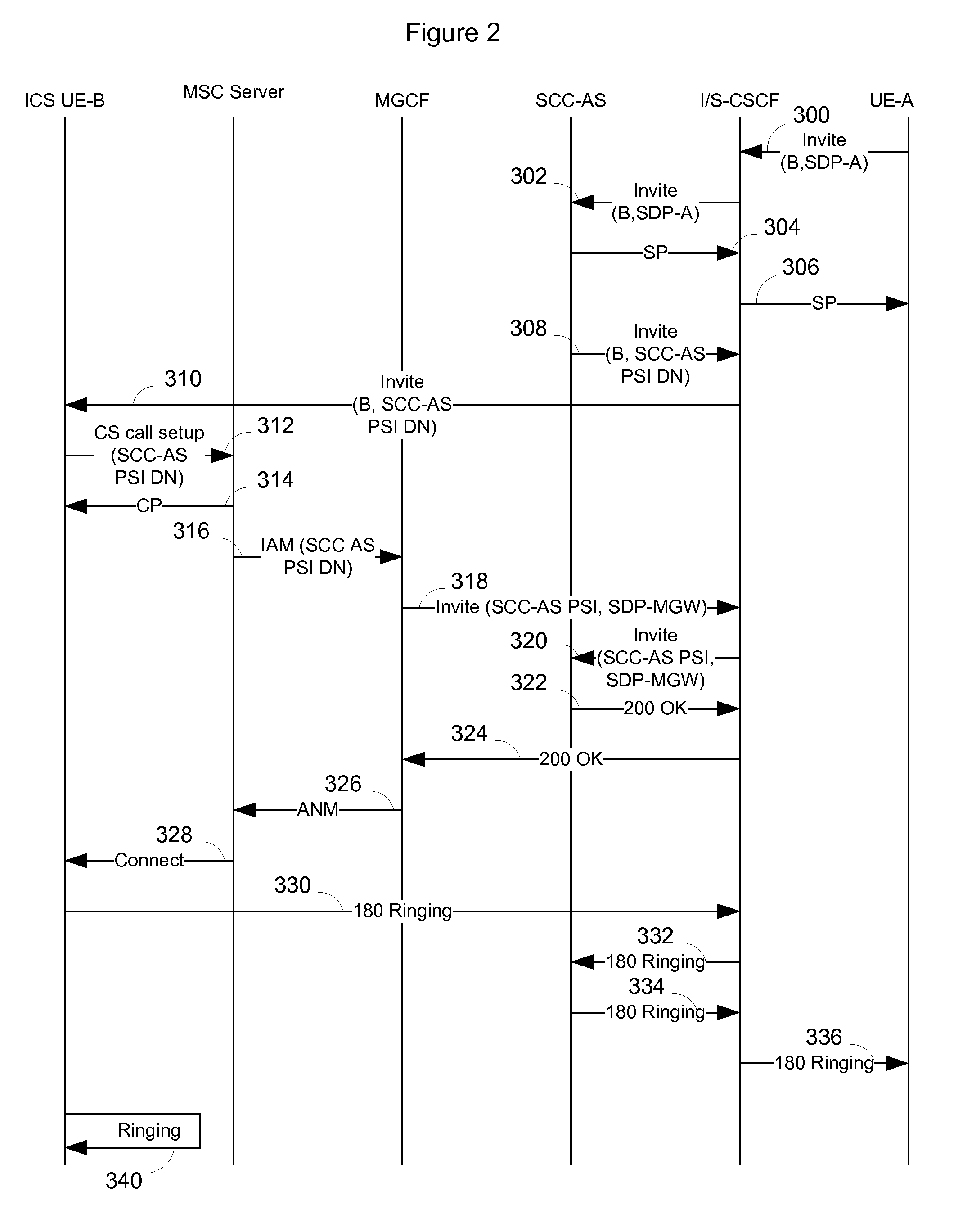Mobile Fast Alerting
- Summary
- Abstract
- Description
- Claims
- Application Information
AI Technical Summary
Benefits of technology
Problems solved by technology
Method used
Image
Examples
Embodiment Construction
[0012]FIG. 1 shows a reference network 10 in which a communication session may be established between user A and user B using the 3GPP ICS (IMS Centralized Services) standard (TR 23.892). IMS stands for IP Multimedia Subsystem. As provided by that standard, IMS Centralized Services (ICS) provides communication services such that all services, and service control, are based on IMS mechanisms and enablers. It enables IMS services when using CS (circuit-switched) access for the media bearer. With ICS, the user services are provided by IMS. User sessions are controlled in IMS via PS (packet switched) access. The CS core network is utilized to establish a circuit bearer for use as media for IMS sessions. With ICS, IMS sessions using CS media are treated as standard IMS sessions for the purpose of service control and service continuity.
[0013]In FIG. 1, an incoming call is placed from user A to DN1 (directory number 1) associated with user B and is first received via a SIP Invite coming ov...
PUM
 Login to View More
Login to View More Abstract
Description
Claims
Application Information
 Login to View More
Login to View More - R&D
- Intellectual Property
- Life Sciences
- Materials
- Tech Scout
- Unparalleled Data Quality
- Higher Quality Content
- 60% Fewer Hallucinations
Browse by: Latest US Patents, China's latest patents, Technical Efficacy Thesaurus, Application Domain, Technology Topic, Popular Technical Reports.
© 2025 PatSnap. All rights reserved.Legal|Privacy policy|Modern Slavery Act Transparency Statement|Sitemap|About US| Contact US: help@patsnap.com



